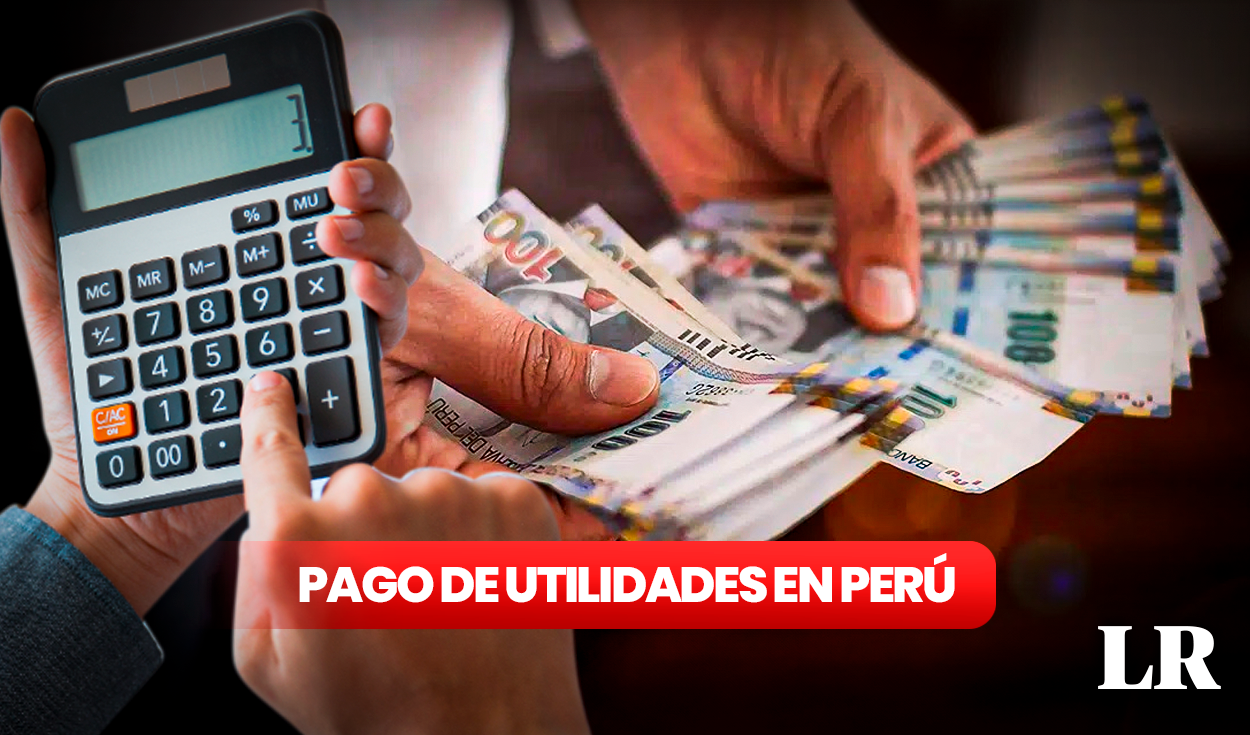
The payment of profits is a labor right that companies are obliged to distribute among their workers and that is extremely beneficial in periods of recession and economic uncertainty. Between March and May, this extra money is delivered according to the annual results and profits of the companies, after deducting the taxes generated in 365 days.
This social benefit is endorsed by the Political Constitution of Peru and is of great importance for formal workers in the private sector, since it seeks to reward their contribution, increase their assets and the profitability of the company. In the following note, find out all the details about the distribution of profits for 2024.
Utilities in Peru: when will the deposit be made in 2024?
According to Jorge Carrillo, a finance expert at Pacífico Business School, the maximum period for the payment of profits is 30 calendar days after the presentation of the annual income tax return by the company. In that sense, the official Sunat schedule establishes that the due dates in 2024 will begin on March 26 and will extend until April 11, according to the last digit of the taxpayer’s RUC.
Usually, the payment period ends in mid-May. Remember that the employer will provide you with a settlement sheet with the information that shows how the result you were paid was reached.
Who is responsible for the 2024 profit payment?
The payment of profits corresponds to all workers on the private activity payroll who, at least, worked one day the previous year. Likewise, temporary, indefinite-term, full-time and part-time employees, as well as foreigners and Peruvians, are included. However, practitioners, people who issue fee receipts, or informal workers are not taken into account.
It is worth mentioning that it is not necessary for the employee to continue working in the company to receive this payment. In that sense, former workers who were in the company the previous year will also receive this extra money.
Regarding the days worked, not only those in which the ordinary working day was completed, but also the days of prenatal and postnatal rest (for women) will be considered. Regarding absences, they will be taken as attendance as long as they are related to legal mandates such as union licenses, null dismissals, among others.
Payment of profits in Peru: which companies should distribute them?
All private sector companies that had more than 20 workers on the payroll and that generated third-category income the previous year must distribute a percentage of their profits among their employees. In that sense, public sector institutions, non-profit organizations, private companies that had 20 or fewer employees on payroll last year, companies with tax losses and microbusinesses are not required to make the payment.
What percentage of profits should be distributed by sector?
According to Cecilia Vargas, partner in the Labor area of CMS Grau, the calculation of profits depends on the economic activity carried out by each company, which varies as follows:
- Industrial companies: 10%
- Fishing companies: 10%
- Telecommunications companies: 10%
- Mining companies: 8%
- Commerce and restaurants: 8%
- Agricultural companies until 2023 and other activities: 5%.
How is the payment of utilities calculated in Peru?
The National Superintendency of Labor Supervision indicates that the payment of profits is determined according to these criteria:
- 50% of the total to be distributed based on the days worked by the company worker
- 50% will be distributed based on the total remuneration received by the worker during the year.
Likewise, the Gob.pe portal indicates that two considerations are established to calculate this economic benefit:
- A portion of the profits is calculated based on your days worked. The average value generated by a day of employee work to obtain that result is obtained. Let’s take an example. If the work day generates S/3 and you worked 180 days, multiply it and that fraction is equivalent to S/540.
- The other part considers your income as a worker. The amount of money to be distributed is divided by the sum of the salaries of all employees, this result is multiplied by everything you have earned in the year. Example: if the division yields 0.02 cents and you won S/27,000, they are multiplied and the product is also equivalent to S/540.
- Both amounts obtained are added and yield a profit to be distributed of S/1,080.
What happens if my company doesn’t pay me my profits?
According to Cecilia Vargas, from the Labor area of CMS Grau, if a company fails to pay this labor right, the worker can report this situation to Sunafil, according to the severity and size of the company. In that sense, said entity can act ex officio to apply a fine ranging from 0.26 UIT (S/1,339) to 15 UIT (S/77,250).
Source: Larepublica
Alia is a professional author and journalist, working at 247 news agency. She writes on various topics from economy news to general interest pieces, providing readers with relevant and informative content. With years of experience, she brings a unique perspective and in-depth analysis to her work.












